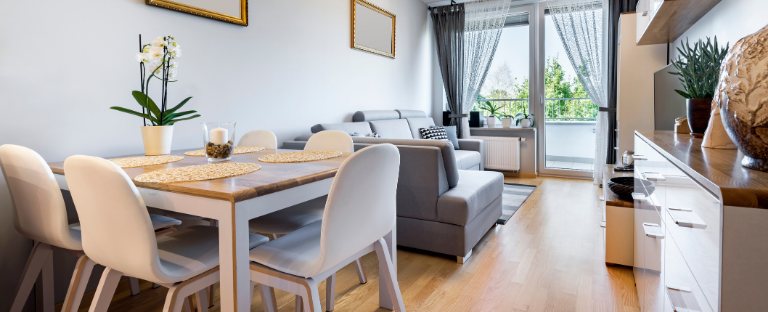
Downsizing to live a less stressful life
While downsizing your life can be exciting, it can also be stressful. The goal is to create a simpler life for yourself, but if you’re preparing your home for sale or moving out of a large family apartment you’ve lived in for what seems like a lifetime already, it can be overwhelming. Downsizing is more than just a step in preparing your home for market, it’s the careful planning needed to make a smooth transition into your new home.
It may seem challenging now, but in the long run, downsizing and decluttering will actually help you live a less stressful life. You’ll have fewer possessions to maintain, clean, repair and, potentially, stumble over.
Here are some ideas to help you get started:
- START EARLY! It’s never too early to begin the downsizing process. Begin by focusing on typical problem areas such as the attic, basement, garage, closets, and file cabinets. Choose one area and just dig in.
- SHOW YOUR GENEROSITY. Since you can’t take everything you own to your new home, now is the perfect time to “gift” some of your treasures to special people in your life like family, helpful neighbors, friends, favorite organizations, your church/synagogue or a charity of your choice.
- SELL ITEMS OF VALUE. Remember, “Some people’s trash is another’s treasure”. A yard sale could be a convenient way to dispose of some unwanted items and to make a few dollars. Just evaluate the goods you plan to sell to determine if the potential is worth the effort of organizing the yard sale. And, if you have art or furniture that you believe has some value, contact a local art auction and consignment house. They will typically visit your home to assess the items of interest and either provide an offer to buy or determine items qualified to go to auction. Remember though, what was originally paid for an item doesn’t necessarily mean that is what will be offered. It is based on the individual item and current trends and consumer demand. Also ask about the sales commission rate for items consigned for auction.
- KEEP YOUR MEMORIES. You probably have boxes of family and vacation photos. Consider new ways to preserve family memories and stories like copying your special photos on to CDs, or try your hand at scrap-booking. There are also professional services that will take all your photos, slides, and videos and do it for you.
- NEW LOOKS FOR BOOKS. If you own a lot of books, you need to spend time downsizing your collections. Books take up lots of space and are heavy (and costly) to move. Consider donations to libraries or senior centers, or sales to used bookstores. Call on a book dealer for older books with potential value.
- USE IT UP AND DON’T MOVE IT OUT. Check your cabinets, fridge and pantry and take an inventory of your canned goods, frozen foods, and paper products. Plan to use as many of these products as you can before moving. When you consider the potential cost of packing and moving you may be better off reducing your box count and going to the grocery store after your move. If you simply have too many of these items, think about the less fortunate and pass them on to a local food pantry.
- RECYCLE SAFELY. Locate and put together all of your household, yard, and automotive cleaning products, as well as paints that can be considered hazardous. Other items considered hazardous include auto batteries, fluorescent lamps, fire extinguishers, fireworks, pool chemicals and propane tanks. You’ll have to move them before selling your home. Check with you local waste disposal or public works departments for the specifics of disposal in your area.
- KEEP IN TOUCH. Create a list of people, places, and utilities/services that need to be notified of your upcoming change in address.
- PLAN AHEAD. Make a floor plan of your new home and use your computer or cut out furniture templates to determine the pieces of furniture that will fit in your new home, and the best location of each. Knowing which pieces will fit in your new space will keep you from moving too much furniture and really streamline the process on packing and moving day.
- PACK A SURVIVAL BAG. Just like your carry-on bag on a flight or a cruise vacation, put together a survival bag for move day. Items to consider include personal needs (medications, eyeglasses, toiletries including a roll of toilet tissue, change of clothes, important papers, etc); kitchen needs (snacks, drinks, folding chair, disposable cups/plates); basic tools (hammer, screwdriver, flashlight, tape, etc.); cleaning supplies (sponge, roll of paper towels, soap, etc.); and payment for mover – be sure you know which form of payment they prefer.
- DON’T BE AFRAID TO ASK FOR HELP! Don’t be too proud or independent-minded to ask for help. Moving is not easy and you do not have to do it all yourself. Some of these downsizing steps take time to accomplish. Remember your goal is to move into your new home happy, healthy, and ready to enjoy you new lifestyle! This is what we do every day at Ready, Set Move Group. If you are looking to learn more about how we can help, Contact us today.